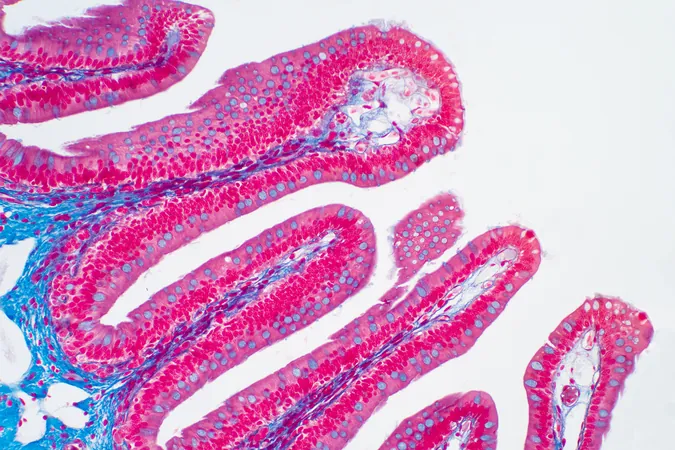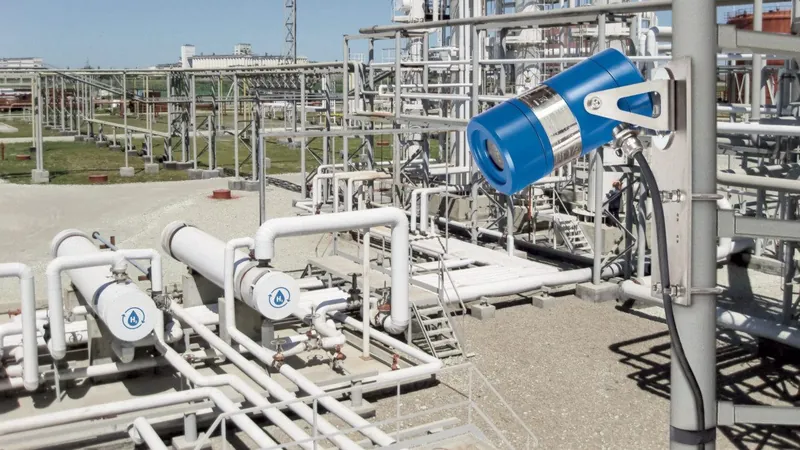
Revolutionary Nano-Biosensor Transforms Real-Time Health Monitoring!
2025-05-23
Author: Yu
Imagine a world where our bodies could be continuously monitored at the molecular level! This exciting possibility could pave the way for optimized drug delivery and the early detection of life-threatening diseases like cancer. For the past twenty years, intense research has been focused on creating innovative devices that can track biochemical reactions inside our bodies and relay this critical information externally.
These state-of-the-art biosensors have made strides in detecting small molecules such as drugs in real time, but they tend to function only for short periods. Despite significant progress, a reliable biosensor capable of long-term monitoring of various substances has remained elusive.
Meet SENSBIT: The Next Generation Biosensor!
Addressing this gap, a team at Stanford University has developed an extraordinary biosensor known as the Stable Electrochemical Nanostructured Sensor for Blood In Situ Tracking (SENSBIT). Remarkably, SENSBIT has shown it can remain operational for up to a week when implanted directly into the blood vessels of living rats. In a groundbreaking study published in Nature Biomedical Engineering, researchers showcased how SENSBIT can continuously track drug concentrations with impressive signal fidelity.
Tom Soh, the senior author and a prominent figure in electrical and bioengineering, expressed his excitement: "This order-of-magnitude improvement in whole-blood sensor longevity represents a monumental leap toward next-generation biosensing technology."
Inspired by Nature: The Gut Connection
Over the last decade, researchers in Soh's lab have ingeniously created a molecular switch capable of binding to small molecules in the body, allowing for continuous measurement. However, these switches were initially vulnerable to degradation by the immune system. To combat this, the team had previously encapsulated these switches in nanoporous electrodes, enabling them to measure drug levels inside live rats' tumors for the first time.
Realizing they needed a better protective material, Yihang Chen, the study's first author, drew inspiration from the human gut. He designed SENSBIT to mimic the gut's natural defenses. Just like microvilli in the intestinal lining, SENSBIT features a 3D nanoporous gold surface that safeguards its sensitive components, while a protective layer modeled after gut mucosa minimizes degradation.
Impressive Performance and Future Potential
When tested, SENSBIT retained an astounding 70% of its signal in undiluted human serum for a month and over 60% after one week of transplantation into live rats' blood vessels. Historically, similar devices had a maximum lifespan of merely 11 hours in this context. SENSBIT's capability to provide consistent, real-time monitoring in complex biological fluids could revolutionize our approach to health.
Understanding how our bodies coordinate against infections through molecular signals could give us an invaluable edge in early disease detection. While there are other methods for continuous molecular monitoring, SENSBIT stands out as a groundbreaking advancement.
A Paradigm Shift in Medicine?
This leap in continuous molecular monitoring holds the promise of a new medical paradigm. It could not only lead to earlier disease detection but also facilitate real-time treatment modifications. "I believe our work sets the groundwork for this future," Chen stated, driven by the ambition to push boundaries in medical technology.


 Brasil (PT)
Brasil (PT)
 Canada (EN)
Canada (EN)
 Chile (ES)
Chile (ES)
 Česko (CS)
Česko (CS)
 대한민국 (KO)
대한민국 (KO)
 España (ES)
España (ES)
 France (FR)
France (FR)
 Hong Kong (EN)
Hong Kong (EN)
 Italia (IT)
Italia (IT)
 日本 (JA)
日本 (JA)
 Magyarország (HU)
Magyarország (HU)
 Norge (NO)
Norge (NO)
 Polska (PL)
Polska (PL)
 Schweiz (DE)
Schweiz (DE)
 Singapore (EN)
Singapore (EN)
 Sverige (SV)
Sverige (SV)
 Suomi (FI)
Suomi (FI)
 Türkiye (TR)
Türkiye (TR)
 الإمارات العربية المتحدة (AR)
الإمارات العربية المتحدة (AR)